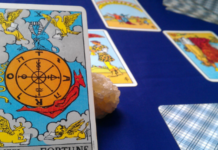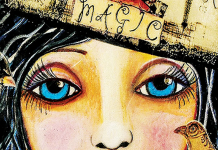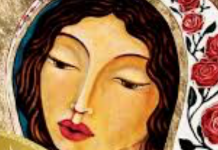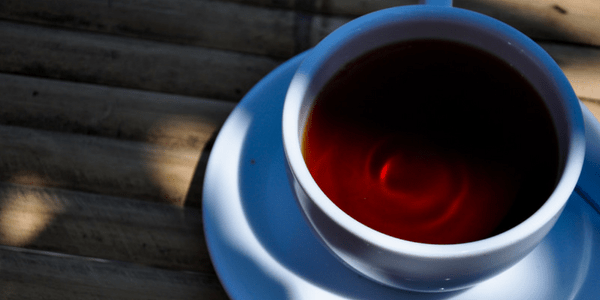
A gateway into the personal and into the future, tea leaf reading (or tasseomancy) is an eloquent, sometimes visually puzzling lens to look through. It is an ancient art that originated in China, but is becoming more popular today thanks to New Age movements and the use of social media. It became popular in the US in the 1920s and has steadily piqued the curiosity of people worldwide.
There are as many ways to enjoy tea leaf reading as there are types of teas. My grandmother introduced me to the art when she looked into the teapots brought to our table at a Chinese restaurant. She spoke a few words — whether they were prophecy or playful storytelling is lost to memory — and I’ve been fascinated ever since. Tea leaf reading and other forms of divination have many benefits, such as a willingness to see issues from a different perspective. Divination tools can allow for self-reflection, assurance, and encouragement, and even predict the future.
It is a practice that demands a good dose of intuitive flair. Perhaps more than any other psychic discipline, tea leaf reading is filled to the brim with all symbols imaginable. But don’t let that intimidate you. There are some very common symbols that are easy to interpret. And with a bit of self-trust, an open mind, and some practice, you can come to enjoy tea leaf reading
Related: Increase your magical intuition: Tips and tricks, by Donyae Coles
Beginning a reading
When learning the art of tea leaf reading, you get to pick who you read for. Pick someone whose company you enjoy and who can give helpful feedback. Someone you wouldn’t mind helping you at the grocery store, or who you’d trust to care for your pet. And give yourself several chances, because any new skill which beckons you to learn it is worth doing several times.
Begin with a teacup that has a simple bowl shape and a handle. This vessel should preferably be free of any interior decorations, notches, or edges that can distort the tea leaves. While a number of intriguing fortune telling teacups, both vintage and modern, are available, their designs can distract from the shapes that unfold in tea leaf reading. If you have one already, it is fine to use it if finding a simple tea cup delays your pursuit of reading tea leaves.
To begin reading, place a teaspoon of loose leaf tea in the teacup. You can use plain tea from the grocery store, or spring for a special tea created by a friend or from a local coffee or tea shop. I prefer leaves that easily unfold, and a blend that doesn’t include many ingredients other than the tea itself.
A favourite of mine is green tea and rose petals, from Montea in Lexington, Kentucky.1 The rose petals have added to readings in remarkable ways — once taking the form of a cape in a reading for a “super mom”, and most often colouring the blossom or bud of a rose created by tea leaves that lined themselves below or to the side of the rose petal.
Whatever tea you choose, select leaves that are neither rolled into pellets, such as Gunpowder green tea, or thin and straw-like, such as Rooibos. Though both are delicious, they don’t lend themselves well to creating impressions for interpretation. Assam is a good go-to black tea for divination, and Moroccan mint green teas can create a sense of calm.
To prepare a cup, let the teaspoon of tea steep for whatever time you desire. Set a purpose for your reading. You may ask a particular question or set the intention that you will receive whatever advice is needed at this time. The advice can be general or it may be specific to an area of your life.
Either drink the tea as-is or use a small strainer to pour the tea into another container. Once the cup is empty, or mostly empty (mystic worker Shaheen Miro2 likes to keep just enough liquid to shift the tea leaves while turning the cup, a common and smart practice), turn the cup over into the saucer. You may want to tap three times on the bottom of the cup and make a wish, as per Romany tradition.
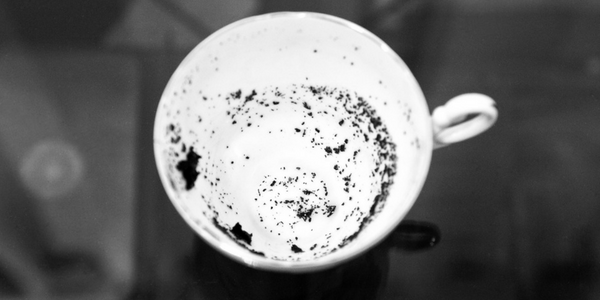
Interpreting the results
Now that your cup is prepared, it’s time to interpret the images in the tea leaves. The images inside the cup are largely interpreted based on location. I prefer to read with the handle close to me. The handle represents personal responsibility — what is within the seeker’s power to change. To interpret the images there, I consider what the seeker’s role is in the situation. The bottom of the cup signifies the past, the middle of the cup the present, and the rim the future.
There are countless images that could appear in you tea leaves. However, simple images, such as numbers, letters, and geometric shapes are very common and are a good basis for interpreting other images. I often see the numbers two and three in tea leaves. The two can indicate a couple, especially when it also resembles a swan. In one my earliest readings, the number two was underlined and near the client’s handle. This client had been curious about her romantic life. With the leaves forming near the handle, I felt that this image indicated her actions were in tune with her goal of being in a relationship. The underline emphasizes the effort it takes to be a good partner.
Of course, numbers can resemble objects of similar shapes, such as a one also being a wand or a broom. A two can be a swan, or a profile of an animal or person. A three often resembles a bird in flight or a dragon. Geometric shapes, such as a rectangle, may signify a letter or other correspondence. Simple houses often appear. A circle or ring could represent a commitment or the process of completion.
When interpreting tea leaves, finding a way to relate the symbols to one another is often a matter of linking their stories in a way that feels personal to you. In other words, use your intuition. It is common to start talking about what you sense without examining the logic of it. Another suggestion is to consider the genres of music, movies, and other entertainment that resonate most with you. As you begin reading, use the spirit of what you enjoy to colour the reading. If you are whimsical, let that influence how numbers and letters and geometric shapes relate to one another. A rectangle could be a letter to Hogwarts, and is that number three a griffon?
Describing what you see in the leaves can be daunting at first. Approach the activity with a sense of fun and you can’t go wrong. Don’t worry about how it sounds. For example, if describing the underlined number two mentioned above, you could say something like “Pairing up seems very important to you. You are working to manifest a relationship because this number two is underlined. But it’s also true that you need a strong foundation, which the line tells us, too.”
Try the following formula of describing what you see. First, describe the way it is facing or any body language. Second, describe places and situations where this image applies to experiences relevant to you and your client. Third, look for more information in leaves nearby or across from the image in the cup.
Regardless of an image’s clarity, if you’ve spotted it, talk about it. If it’s clear, without breaks or other leaves interfering in the shape, it holds importance. But sometimes the baffling images are the most rewarding to mull over. Give them all some attention.
And never fear asking your client what they see — this is their cup, so their input is terrific and valid. Few clients have ever been upset at me for asking for their take, so ask if you’re interested, and you both gain from one another.
Related: Chinese fortune telling, tarot, and divination, by Benebell Wen
Conclusion
As you begin to read tea, or return to the art, bear in mind these basic ideas: Trust your first impressions. Practice will make it easier. And symbols often clarify themselves when you connect them to images near them in the cup.
Tea leaf reading helps you peer lovingly into the future, and this is easiest when you entertain the joy of the present. There are no wrong answers. Give yourself over to the mystery, and as a friend said about living a spiritual life the other night, “Don’t stop before the miracle happens.”
Related: Scrying: How to get started, by Donyae Coles
Related: Divination for the dead of winter, by Donyae Coles
Image credits: Praveen, canopic
- Mon Tea: Loose leaf teas and brewing accessories, monteashop.com. [↩]
- Shaheen Miro Insights, shaheenmiroinsights.com. [↩]


